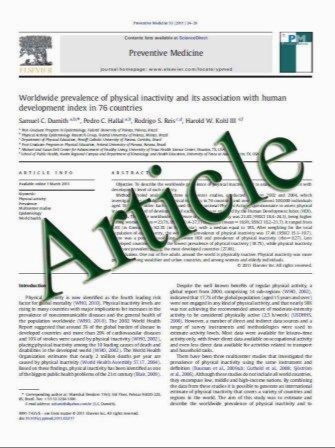Heart Rate Variability and Exercise Capacity of Patients With Repaired Tetralogy of Fallot
- نوع فایل : کتاب
- زبان : انگلیسی
- مؤلف : Suchaya Silvilairat • Jatuporn Wongsathikun • Rekwan Sittiwangkul • Yupada Pongprot • Nipon Chattipakorn
- چاپ و سال / کشور: 2011
Description
Heart rate variability (HRV) has been used as a reliable method to detect cardiac autonomic nervous system activity. Peak oxygen uptake (VO2 peak) has been a predictor of death for adults with repaired tetralogy of Fallot (TOF). This study investigated the correlation between HRV and exercise capacity in 30 patients with TOF after surgery for total correction. The median age of the patients was 14 years (range, 9–25 years), and the median follow-up period was 11.6 months (range, 5.3–20.2 months). Low- and high-frequency-domain HRV significantly correlated with VO2 peak (r = 0.56, P = 0.001 and r = 0.44, P = 0.02, respectively). After the 1-year follow-up evaluation, VO2 peak and HRV analysis did not differ from those at entry to the study. However, low- and high-frequency-domain HRV still correlated significantly with VO2 peak (r = 0.43, P = 0.03 and r = 0.52, P = 0.007, respectively). Left ventricular early diastolic myocardial velocity was most closely correlated with theVO2 peak (r = 0.51, P = 0.005). Impaired cardiovascular autonomic control and left ventricular diastolic dysfunction may be responsible for exercise intolerance in patients with repaired TOF. Longterm follow-up evaluation with exercise testing and 24-h Holter monitoring are warranted.
Pediatr Cardiol DOI 10.1007/s00246-011-0040-7 Received: 15 February 2011 / Accepted: 16 June 2011


